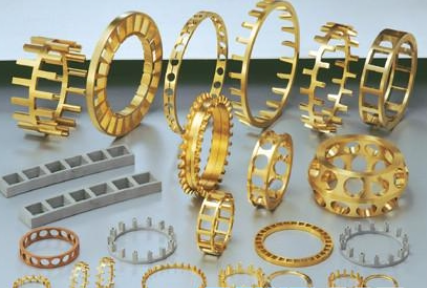Why the bearing cage was damaged ?
When the bearing is running, it will be damaged and abraded more or less due to friction, especially the bearing cage is damaged even at high temperature operation.
The cage is a part of the bearing structure. That is to say, if the cage is damaged, the bearing will not operate normally. There are many reasons for bearing damage. However, when we encounter bearing cage damage during use, Be sure to judge the degree of damage to the bearing cage according to the situation, so as to find the most fundamental cause, and finally take corresponding measures, and prevent repeated damage.
Bearing cage damage degree:
The first level of damage to the bearing cage: the stage where the bearing begins to fail, at this time, the temperature is normal, the noise is normal, the total vibration velocity and the frequency spectrum are normal, but the total peak energy and the frequency spectrum show signs, reflecting the initial bearing failure stage. At this time, the true bearing failure frequency appears in the ultrasonic range of about 20-60khz.
The second level of damage to the bearing cage: normal temperature, slightly increased noise, slightly increased total vibration speed, and the vibration spectrum does not change significantly, but the peak energy increases significantly, and the frequency spectrum is more prominent. The bearing failure frequency at this time appears in the range of about 500hz-2khz.
The third level of bearing cage damage: the temperature is slightly increased, noise can be heard in the ear, the total vibration speed has increased greatly, and the frequency of the bearing failure and its harmonics and side bands are clearly visible on the frequency spectrum of vibration speed, and the other is the vibration speed The noise level on the frequency spectrum increased significantly, and the total amount of peak energy became larger than that in the second phase, and the frequency spectrum became more prominent. The bearing failure frequency at this time appears in the range of about 0-1khz. It is recommended to replace the bearings at the end of the third stage, then at this time, the bearing failure characteristics such as wear that can be seen by the naked eye should have appeared.
The fourth level of bearing cage damage: the temperature is significantly increased, the noise intensity is significantly changed, the total vibration speed and the total vibration displacement are significantly increased, and the frequency of bearing failures in the frequency spectrum of vibrations begins to disappear, which is higher by a larger random broadband Frequency noise ground level replacement; the total amount of spike energy increases rapidly, and some unstable changes may occur. The bearing must not be allowed to run during the fourth stage of fault development, otherwise catastrophic damage may occur.
The causes of damage to the bearing cage are:
1.Insufficient bearing lubrication
Lubricating oil or grease is dry, not added in time (maintenance), the labeling of lubricating oil or grease is incorrect.
2.The impact load of the bearing
The intense vibration in the impact load causes the rolling body to hit the cage.
3. Cleanliness of the bearing
The bearing is not well sealed in the bearing box, and dust enters, and the friction between the rolling elements and the cage is required to damage the cage.
To optimize the use of cages and reduce bearing cage damage, we can analyze from two aspects:
1. Under the premise of bearing accuracy guarantee:
a. The welding process at the welding end is optimized. The argon arc welding process is used, and the welding depth is adjusted. Under the condition of ensuring the length of the pillar, the welding is the deepest.
b. The threaded end adopts dense thread, which must be 100% fastened in place, and a special process is used to make the pillar and the cage washer always fit together.
c. The pillar adopts surface hardening process to ensure the minimum wear and tear on the surface of the rolling elements and the pillar.
d. The center hole of the rolling element and the special treatment of the hole diameter ensure a low roughness value.
e. Reasonably reduce the clearance between the center hole of the rolling element and the pillar, and minimize the damage to the cage due to the start and stop impact.
2. Bearing application
a. When hoisting, the uniform force of the hoisting holes must be guaranteed. When hoisting with four or three holes.
b. Changing the load zone also guarantees the uniform load of the lifting holes, and when any obstacles due to deformation or foreign objects are blocked, the lifting and dismantling must be stopped and replaced by a press.
c. When cleaning and placing spare bearings, they must be assembled in accordance with the new bearing assembly method and placed in reserve to avoid long-term deformation of the cage.


 Skype
Skype

